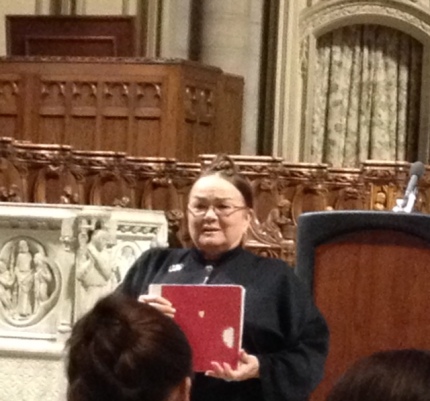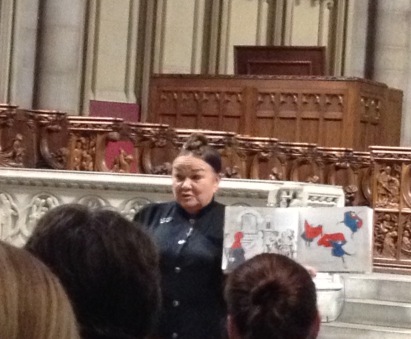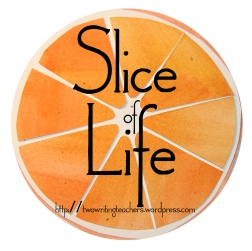My One Little Word for this year is discover. What have I discovered over the past month? Many things, but I have to confess this slice has eluded me for the past two days. It’s been hiding, making me work to discover what I wanted to say about a month of blogging every day. In the end, I thought about what is necessary to being open to and making discoveries. Carol Dweck’s “Growth Mindset” came to mind, so I decided to frame it in terms of Dweck’s basic tenets.

Embrace the challenge. We made it! Thirty-one days, thirty-one slices.
Be inspired by the success of others. I am in awe of the talented writers who have shared their writing this month. Your writing has inspired and humbled me. I have discovered several new blogs and new voices and am excited to continue to learn from all of you.
Thrive on feedback. I cannot thank you all enough for your kind and encouraging comments. I feel so fortunate to be part of this incredible, supportive community!
Support and encourage each other. I have loved reading all your slices and have left as many comments as possible. But one of the downsides of this challenge is that there just isn’t enough time to do my own writing AND read all the slices that sound so interesting.
Expect excellence. I have strived each day to create a piece of writing that was worth sharing with you. This has given me more insight into my writing. Sometimes I feel pretty slow about these discoveries and think, “Duh, you’re just figuring this out now?” But at least I figured it out, right? After all, that’s what this journey is about.
Be resilient and overcome obstacles. Many times this month, I’ve started a piece of writing with one idea in mind, but ended up with something very different from what I envisioned. This was often frustrating and never easy. But I did it.
Accept hard work, effort, & deliberate practice. Like all of your, over the course of the month I have struggled to find the right word, rearranged a paragraph after I thought a piece was finished, and tried new forms I wasn’t comfortable with. But all those struggles were worth it.
Congratulations, everyone, for this incredible accomplishment!
Thank you to Stacey, Tara, Dana, Betsy, Anna, and Beth for your dedication and the hard work it took to make this challenge possible. You are all an inspiration to me!
Be sure to visit Two Writing Teachers to read more Slice of Life posts.













![By Theendofforever at en.wikipedia. Later version(s) were uploaded by Ram-Man at en.wikipedia. [CC-BY-SA-3.0 (http://creativecommons.org/licenses/by-sa/3.0/), GFDL (www.gnu.org/copyleft/fdl.html), CC-BY-SA-3.0 (http://creativecommons.org/licenses/by-sa/3.0/) or CC BY-SA 2.5-2.0-1.0 (http://creativecommons.org/licenses/by-sa/2.5-2.0-1.0)], from Wikimedia Commons](https://readingtothecore.files.wordpress.com/2015/03/lupinroad.jpg?w=809&h=604)
















